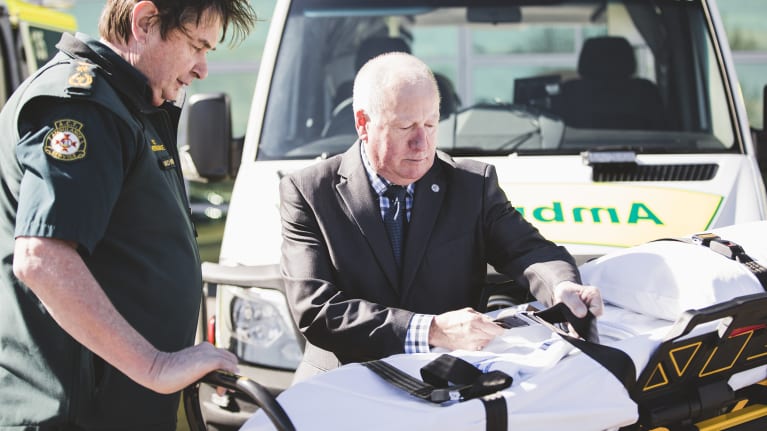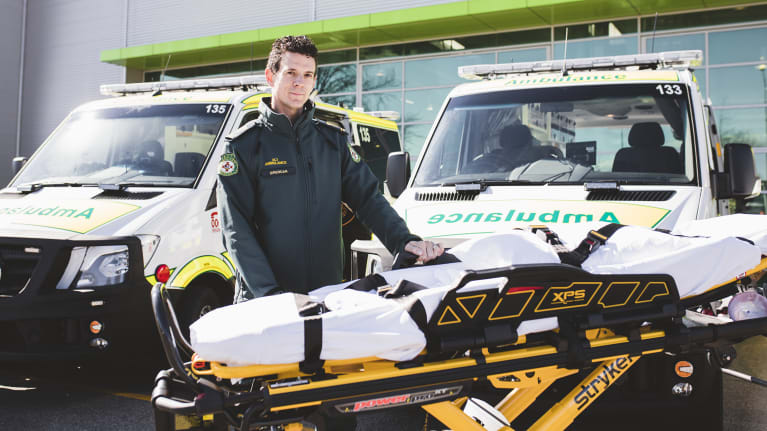First Aid Course in Canberra. Nationally Recognised Training. Experienced Teachers. Excellent RTO in Allens Training. Dickson First Aid Course.
They can lift more than 300 kilograms at the push of a button, and the new electric stretchers and power loaders installed in ACT ambulances are being hailed as tools that will keep paramedics and patients safer.
Five new state-of-the-art ambulances fitted with the stretchers arrived in Canberra on Monday, while three ambulances already in the fleet have been retro-fitted to include the technology.

Photo: Jamila Toderas
Two-thirds of ACT paramedics’ accepted compensation claims from 2011 to 2016 were for musculoskeletal injuries suffered as a result of lifting and transporting patients, with back injuries accounting for 42 per cent of all accepted claims.
The manual stretchers in the territory’s ambulances weigh about 45 kilograms, and ACT Ambulance chief officer Howard Wren said the strain on paramedics was only getting greater, with an increasing population and heavier patients.
“Constantly, we’ve got an increasing workload,” Mr Wren said.
“Regrettably, we are a society that’s getting heavier year by year and the ongoing requirements to [lift] larger people is [taking] its toll.
“We’re very hopeful that this is going to make a difference.”

Photo: Jamila Toderas
Mr Wren said the electric stretchers, which run off a battery-powered hydraulic system, would make lifting safer for both paramedics and patients.
“Beyond just attempting to prevent people from being injured, we’re looking at hopefully reducing our compensation insurance payments, which are always a concern,” he said.
Mr Wren said he was not sure how much had been spent on compensation for paramedics who had suffered lifting-related injuries in recent years.
Emergency Services Minister Mick Gentleman said every ambulance in the territory would have electric stretchers and power loaders installed by the end of 2020, as part of a $4.6 million commitment made in this year’s budget.
Another two ambulances, already fitted with the technology, are set to arrive in November, increasing the ACT’s fleet to 25.
Mr Gentleman said each new vehicle with an electric stretcher and power loader installed cost about $230,000, while retro-fitting an old ambulance to include the technology cost about $36,000.
“When all of the ambulances are fitted with the electric stretchers, we see much less opportunity for injuries such as injuries from lifting,” he said.
He said demand on the ACT Ambulance Service was at its highest level ever, and constantly growing as the territory’s population increased.
Despite this, the service had continued to record the best response times in Australia over the past six years.
“It certainly will grow in demand over time and we’ve seen that from the growth that we’ve had already,” Mr Gentleman said.
“It’s up to us, of course, to ensure that we invest in that demand.”
Book in to a first aid course in Canberra at Canberra First Aid now. www.canberrafirstaid.com

